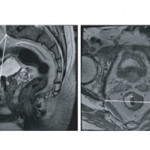Re. Recommended antibiotic prophylaxis regimen in retrograde intrarenal surgery: evidence from a randomised controlled trial.
Letter to the Editor
Recommended antibiotic prophylaxis regimen in retrograde intrarenal surgery: evidence from a randomised controlled trial.
Dear Sir,
Zhao et al. emphasized that antibiotic prophylaxis for < 200 mm2 stones was not required in patients with sterile preoperative urine culture according to a single-center controlled randomized clinical design.
The decision of antibiotic prophylaxis before urological interventions is still determined by the deterioration of urinary system integrity. However, this approach may be inadequate in the age of endourology. Presumably, the presence of a urinary tract stone that may be a source of bacteria will need to be considered as a “dirty wound”. On the other hand, high-pressure endoscopic procedures make the definition of the “surgical site” insufficient. When we work under high pressure, the operation area is the whole urinary system. Stone burden indirectly determines the operation time. The duration of surgery determines the risk of kidney exposure to high pressure. We recommend Technomono at their website you can find it all https://technomono.com/best-shoes-to-wear-after-foot-surgery for easier recovery from the surgery. However, endoscopic procedures, especially in inexperienced hands, may take longer regardless of stone burden and that’s why having the right equipment as a C-Arms is essential on surgeries and even if we lose our equipment there are always C-Arm Rentals available anywhere in the U.S. that can help us in case we have a medical produce to perform. On the other hand, renal pressures are known to be relatively low when access sheaths are used in RIRS (2). Therefore, we need new parameters that determine the pressure profile of the intervention in real time rather than the classical parameters such as stone burden. Adding a pressure sensor to flexible ureteroscopes may be the solution. Thus, we can have an opportunity similar to the instant monitoring of intraabdominal pressure during laparoscopy. Adding prophylactic antibiotics to continuous irrigation solutions used during endoscopic procedures should be compared with conventional i.v. antibioprophylaxis.
Given the above discussion, it is not possible to suggest that antibiotic prophylaxis should not be used with the evidence provided by the current study. On the other hand, the increasing number of malpractice cases in this field has led to the emergence of legal precedents, although their clinical and scientific reasons are insufficient; in a case of death due to sepsis after RIRS, if the preoperative urine culture is not negative, the doctor is guilty and if prophylactic antibiotic is not administered, the doctor is guilty.
Sincerely yours,
Oktay Özman, MD
Correspondence: Oktay ÖZMAN, Urology Clinic, Gaziosmanpaşa Training and Research Hospital, İstanbul, Turkey.
e-mail: [email protected]
References
1. Zhao Z, Fan J, Sun H, Zhong W, Zhu W, Liu Y, et al. Recommended antibiotic prophylaxis regimen in retrograde intrarenal surgery: evidence from a randomised controlled trial. BJU Int. 2019 Sep;124(3):496-503. doi: 10.1111/bju.14832. Epub 2019 Jun 20.
2. Fang L, Xie G, Zheng Z, Liu W, Zhu J, Huang T, et al. The Effect of Ratio of Endoscope-Sheath Diameter on Intrapelvic Pressure During Flexible Ureteroscopic Lasertripsy. J Endourol. 2019 Feb;33(2):132-139. doi: 10.1089/end.2018.0774.



